As told to William Tobias by Director Michael Merino.
Its 3am. As camera rolls, actress Jesscia Uberuagu is sitting on a motorcycle in
downtown Los Angeles.
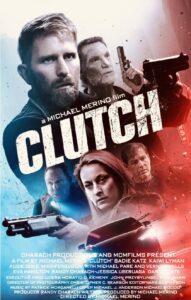 From the adjacent alley two men emerge headed directly for her. They’re not actors or in any way involved with the film and, to make matters worse, they’re stumbling around like zombies, likely on ketamine. Aaaannnnd we need to get
From the adjacent alley two men emerge headed directly for her. They’re not actors or in any way involved with the film and, to make matters worse, they’re stumbling around like zombies, likely on ketamine. Aaaannnnd we need to get
the shot before the cops show up This is independent filmmaking in the summer of 2024.
No permits, no locked locations, no uniformed security, gas-powered guns, and a crew of five…because we’re pirates and we wait on no one for permission.
The film in question is the award-winning (LA Film Fest Best Independent Film 2025) action-thriller CLUTCH, following one night in the life of ride-hailing driver Tonya (Sadie Katz, Wrong Turn 6). She’s hijacked by X (Kaiwi Lyman, Den of Thieves), on the run from his crime boss Vernon Wells (Mad Max 2), which sets in motion a series of events placing both their lives in peril.
The film also stars Augie Duke (Mayans M.C.), Mike Ferguson (Showdown at the Grand), Eva Hamilton (Ruin Me), Randy Charach (Vanished), and Michael Pare (Streets of Fire).
CLUTCH is written, produced, and directed by Michael Merino.
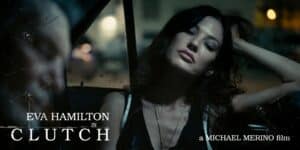
The idea of CLUTCH began as most films in Hollywood do, with hopes of a large
budget, A-list stars, and premieres around the globe. However, after years of trying to finance CLUTCH at a budget of about $1.5 million USD (not a fortune by Hollywood standards, but not exactly pocket change), I decided to try something much different, riskier, and far more grass roots. With the help of a very trusting producer, Randy Charach, we dumped the heavy-handed executive producers who were trying to “package” the film, left behind the diva actors overly concerned about their looks along with the questionable producers who hid the budget as if it were the nuclear codes while they make deals for promotional placement that make no sense.
An electric car for a gangster film? I think not. No, our version of CLUTCH would be birthed by a collection of artists who want to make the best film possible for the love of the game.
I knew in order to do so, the budget would have to be low. And by low I mean LOW, like a used 2017 Range Rover with three wheels low. Every time you make a film it’s a gamble and you don’t know for certain if it can be pulled off. But you give it your best effort.
What I didn’t want was someone I’d never even met in a room somewhere
making a “creative” choice that sends your film down an entirely new path—sometimes to its death. And since at that point I still owned 30% of the film, I decided to sell my shares to our EP John. More cash, more choices, more chances and more control.
After locking in some initial money it was time to crew up. Many passed thinking the a waste of time and or not enough pay. I’d tell them, “It’s street theater, in the spirit of Cassavetes and cinema verite.” The reply would usually be, “Cassa who, cinema what?” But, we found a band of pirates who saw it as an adventure.
So, the next step was securing the star of the film: the car. Now to Texas, where our story begins.
That’s right…Texas.
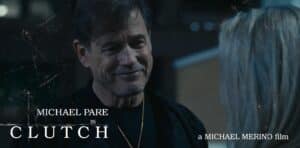
I’m at the car rental counter at the Austin airport, picking up the picture car (the star car of the film). When I’m handed the keys I walk out to find the car I had reserved is not in fact a Chrysler 300 but a Toyota Camry, not exactly the gangster look I was hoping for.
Not even close.
Returning to the counter I was directed to the VIP rental desk upstairs. As I exited the escalator there she was, our 300, parked behind red velvet stanchions, her black onyx crystal pearl paint glistening in the parking garage light. I knew this was the car. After all, in this film the car IS the set. My heart sank when I was told that this particular 300 is reserved for VIPs. Trying to think quickly, I explained to the clerk that we were making a
movie and needed that specific car. “A MOVIE!” she exclaimed. “What movie?” Right then, I knew this was the way. I shared the plot with her as she hung on every word. As I finished talking, she leaned in and dropped the keys in my hand. “Take it!” she smiled. I thanked her profusely and left quickly—before she changed her mind.
That night I loaded the car fully. I mean FULLY: the trunk, the back seat from top to bottom, even the wheel wells. The next day my wife and I were on the road to LA, driving our props, wardrobe, guns, luggage, office supplies, blankets, gun
cases…everything I felt we might need on the shoot. We stopped for two nights without incident, but I was nervous and sleepless as I worried that someone could break into the car and steal our entire production.
Arriving exhausted two days later, I headed for downtown Los Angeles.
I checked into our two-bedroom hotel suite in the jewelry district, just three blocks from the Bradbury Building (BLADE RUNNER). That room would be a crash pad for myself and my first AD Markus Essien as well as our production offices, holding area, wardrobe, makeup, props, catering, green room, transportation depot, filming location, and laundry facility.
We ran the whole production from the 11th floor, overlooking the hotel’s huge parking lot patrolled by day an army of parking attendants that packed it
full.
Each night, come 8pm, the lot would be practically empty and we’d take it over as a set. We used it for a multitude of scenes, changing the angle, reframing the shot, making it look like eight different locations—thanks to our brilliant DP Christopher Pearson. Across the street from our hotel we found an alley filled with dumpsters, scattered trash, pallets, and barrels. That doubled as three or four other locations. We also filmed just off Skid Row, Broadway, the Fourth Street (Viaduct) bridge, Chinatown, and the streets of downtown and East LA. We drove around the city with a small camera mounted both inside the car’s windscreen and on the driver’s window.
And by WE, I mean our leading lady Sadie Katz, who owns this film with her authenticity and vulnerability. Her foil Kaiwi Lyman was the last actor we cast. We had considered many others, but in the end none of them had felt right. I had worked with Kaiwi years before and, although we really didn’t know one another well, he came with Sadie’s recommendation and serious acting chops. What I didn’t know was that he was living and working on a project in Brazil and, on our budget, flying him to LA was a luxury.
But I knew he was right, so out came the credit card and in came Kaiwi. Our leads were now in place.
The truth is, bad guys make a great film. Sadie had worked on another film with Vernon Wells, a legendary bad guy, and I knew he’d have just the right sort of maniacal gravitas. For his henchmen, we enlisted tattoo-covered baddie Mike Ferguson and his foil, Dan Istrate, an actor I’d worked with for years. He’s trained in the classics and Shakespeare and is a former Romanian military officer.
Off-setting all this testosterone is the lovely and eccentric Augie Duke, who brought exactly the quirky schemer vibe we needed.
And what would a gangster film be without a femme fatale? Enter Eva Hamilton, pitch perfect. Had we not found her we would had to create her. Which brings us back to Jessica Uberuaga sitting on that motorcycle.
As the ketamine zombies approached, we all began to panic, but she was a cool as a cucumber. Probably something to do with her Basque heritage—something she and I share. Our cast was filled with actors who stepped up to make a movie literally on the streets of LA in the middle of the night.
Did I mention that veteran actor Michael Pare stood on the sidewalk in a robe and slippers at 11pm, no PAs blocking passersby and no uniformed security?
So we filmed for 10 nights with no permits, no locations locked, using gas powered guns, cars with camera mounts, and locations found literally on the day.
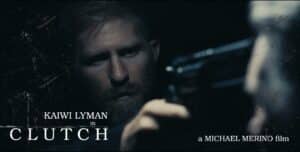
When making a film you throw yourself fully into it. You do what you have to do to get it done. It really is a form of temporary insanity. You find yourself getting into physical altercations with overzealous security guards or a rogue cyclist who accidentally (or intentionally, still unclear) ran over our second AD at 2am.
Our set was also invaded by a number of homeless men who’d yell at unseen forces for blocks, slowly making their way toward us. We politely waited for them to pass by—this was their turf, after all—only to find that they’d stopped yelling, turned to someone on the crew, and lucidly asked for a smoke. Then they’d just continue on their way, yelling again for blocks and blocks.
We learned to just wait them out. We also had the grace of countless workers on the streets of downtown LA who looked the other way as we filmed or loved the idea of being a small part of our film.
This type of filmmaking is a collaboration of herculean proportions, with the weight carried by all. In the end it’s about the people you surround yourself with that are willing to take on the journey. After all, pirates don’t work alone.
Oh and did I mention the swarm of locusts?
I’ll save that story for the sequel.

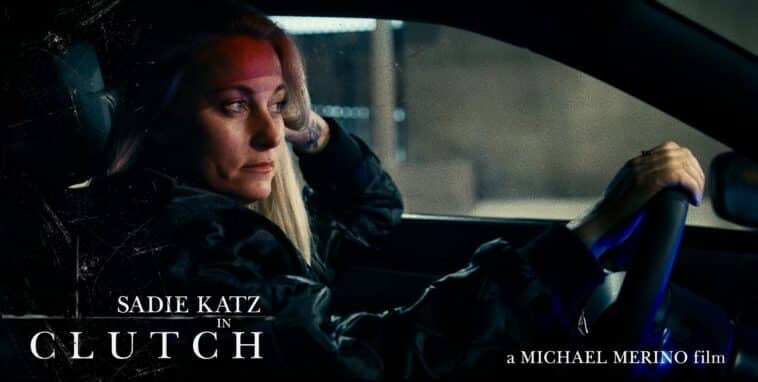

GIPHY App Key not set. Please check settings